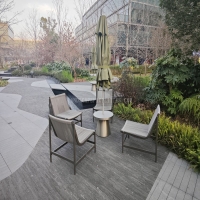Welcome to the website for landscape facilities products and knowledge.
How does the bin’s design prevent the escape of loose waste during windy conditions?
Windy conditions can turn an ordinary trash bin into a source of litter, scattering loose waste and creating environmental hazards. To combat this, modern bin designs incorporate several key features that ensure waste remains securely contained.
1. Weighted Bases: Many outdoor bins are equipped with heavy or weighted bases to prevent tipping. This stability ensures the bin stays upright even during strong gusts, reducing the risk of spills.
2. Secure Lid Mechanisms: Tight-fitting or locking lids are essential. Hinged or snap-on lids create a seal that prevents wind from lifting them open, while designs with small openings minimize exposure to airflow.
3. Low-Profile Shapes: Bins with tapered or streamlined shapes reduce wind resistance, making them less likely to topple. Some models feature aerodynamic curves to deflect wind pressure.
4. Internal Liners or Flaps: Certain bins include inner flaps or liners that act as secondary barriers, catching lightweight debris before it can escape through gaps in the lid.
5. Anchoring Options: For high-wind areas, bins may have anchor points for straps or bolts, securing them to the ground or nearby structures.
By combining these elements, windproof bins effectively contain waste, promoting cleaner public spaces and reducing environmental impact. Whether in parks, streets, or residential areas, these designs prove essential for responsible waste management in all weather conditions.
Related search:

Recommendation
Metal structure rattan chair without armrests for single person, with woven seat and backrest.